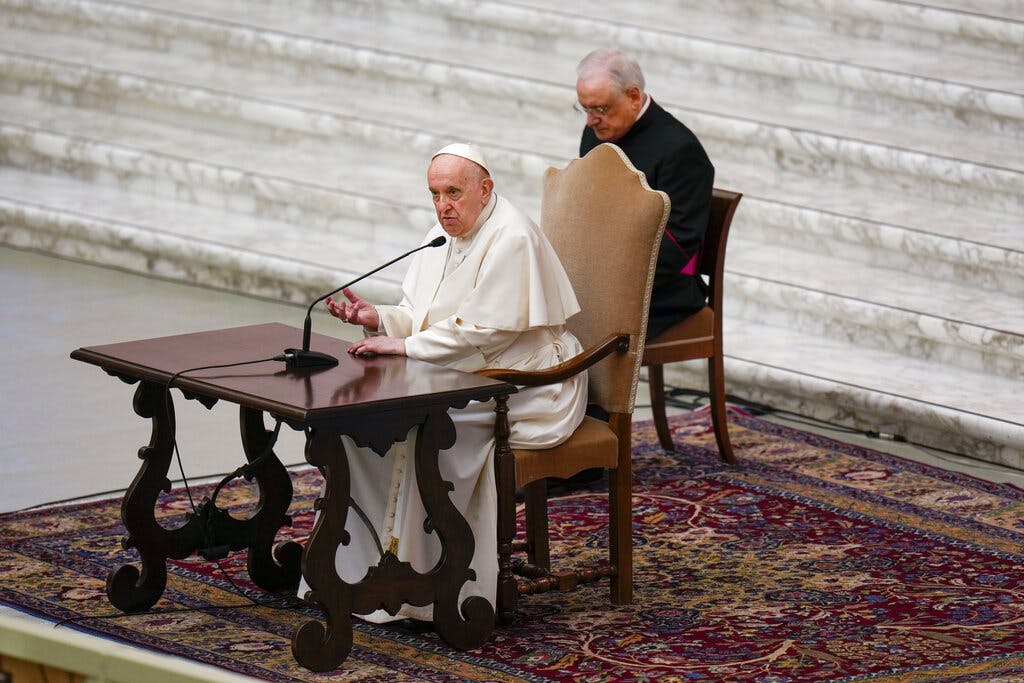In Battle Over Liturgy, Pope Francis Detects the ‘Odor of the Devil’
While the pope would like to move beyond the contretemps over how Catholics worship, history suggests there is not a prayer of that happening.

Pope Francis, in a sharply-worded statement, blamed those who would retain the traditional liturgy of the church as carrying “the devil’s odor,” pulling back the curtain on divisions among the Catholic faithful that persist nearly a decade into Francis’s papacy. He made those comments on Saturday at the Pontifical Liturgical Institute.
The condemnation was yet another indication of conflict between the Vicar of Christ and conservative elements in the church who look toward the nonagenarian pope emeritus, Benedict, as a pontiff more aligned with their vision of the One True Church.
His Holiness asserted: “I underline again that liturgical life, and the study of it, must lead to greater ecclesial unity, not to division. When liturgical life is a bit of a banner for division, there is the odor of the devil being inside there, the deceiver.”
Francis insisted that “it’s not possible to render worship to God and at the same time make a battleground of liturgy for questions that aren’t essential.” While the pope would like to move beyond the contretemps over how Catholics worship, history suggests there is not a prayer of that happening.
The Tridentine Mass, or Traditional Latin Mass, sometimes referred to as usus antiquior, or “more ancient usage,” was first adopted in 1570 by Pope Pius V, who in the throes of the Counter-Reformation made effort to standardize the liturgy by allowing only those rites that had persisted for 200 years.
In the wake of the reforms of the Second Vatican Council, the Novus Ordo Missae, or “new order of the Mass,” was instituted. The Vatican described how “the rites are to be simplified, due care being taken to preserve their substance.” These include expanded use of the vernacular, more austere vestments, and priests facing the congregation.
In a counterattack against Vatican II cheered by Church conservatives, Pope Benedict in 2007 penned the “Summorum Pontificum,” which named the traditional mass an “Extraordinary Form” and permitted its use without prior permission from bishop or cardinal.
Like a president undoing an executive order from his predecessor, Pope Francis issued last year an apostolic letter, “Traditionis Custodes,” that constricted use of the Tridentine Mass. “Traditionis Custodes” repealed “Summorum Pontificum,” and mandated a more onerous process of approval for offering the old rites.
In an accompanying letter, Francis reported feeling “saddened” that the use of the Tridentine Mass was being used to signal “rejection not only of the liturgical reform, but of the Vatican Council II itself, claiming, with unfounded and unsustainable assertions, that it betrayed the Tradition and the ‘true Church.’”
This unleashed deep ripples of discontent from those attached to the Tridentine Mass. A Catholic commentator, Michael Brendan Dougherty, wrote in the New York Times: “Pope Francis envisions that we will return to the new Mass. My children cannot return to it; it is not their religious formation. Frankly, the new Mass is not their religion.”
A conservatice who has long been an adversary of Pope Francis, Raymond Cardinal Burke, last year wrote that the pontiff’s might “is not ‘absolute power’ which would include the power to change doctrine or to eradicate a liturgical discipline which has been alive in the Church since the time of Pope Gregory the Great.” Gregory died in 604 of the common era.
This sentiment is held by a small but vigorous community of believers. The Catholic News Agency reported last year that statistics show “slow but steady growth each year” among those who celebrate the Tridentine Mass and that “their members tend to be younger than average churchgoers.”
The online Latin Mass Directory notes that there are 645 venues offering the Tridentine Mass in America. The United States Conference of Catholic Bishops lists 17,755 parishes nationwide.

